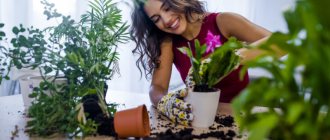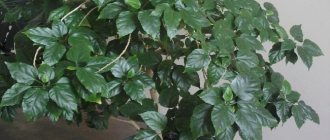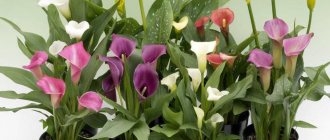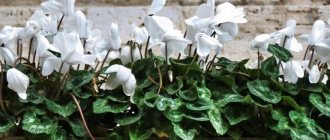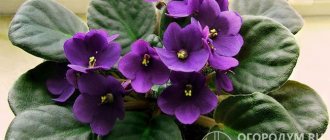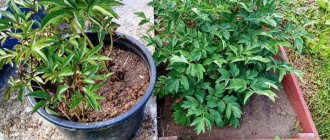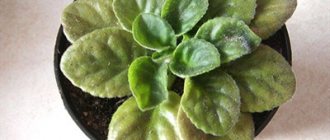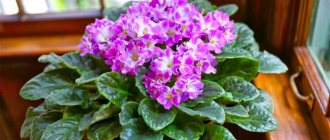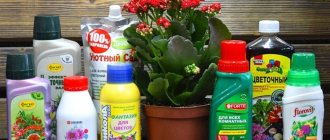Indoor plants can stop blooming for various reasons, but, as a rule, the set of these reasons is common to all. Accordingly, the algorithm for further actions to eliminate the problem is in most cases identical.
Have you noticed that all flowering plants are usually in a blooming state when they are put up for sale? And what about the fact that each of these plants, in most cases, appears in the store exclusively during its flowering season (hyacinth, orchid, aphelandra), and after its end is usually marked down? This is exactly the nuance that you should first know when looking for an answer to the question of why the plant has not bloomed since you brought it home. But first things first. There may be several reasons why your flower was last in buds exclusively in a flower shop.
plant flowering stimulants
This is precisely what they do to sell you a plant covered in flowers. As a rule, flowering stimulants are not widely available, so you are unlikely to be able to repeat the trick with lush flowering, and there is no need to do so. The fact is that after a period of active flowering, especially if it was stimulated with special preparations, the plant weakens. In order to return to normal, it takes a long period of time. Which, of course, will not happen if you try to stimulate the flower again. Moreover, your new indoor “pet” may even die.
In this situation, you need to let the plant “come to its senses”, if necessary, transplant it into new soil in the spring and care for it, observing the conditions it needs.
Diseases
Even in an apartment that is well protected from external influences, Hoya can be overtaken by various diseases that will prevent it from throwing out its buds. All efforts will be aimed at combating diseases.
Table 1. What diseases affect wax ivy
| Name | Description |
| Rot | This is a fungal disease. It begins with the shoots becoming soft and lethargic, they change color and begin to rot. If the fungus has not yet spread throughout the entire plant, diseased shoots should be cut off and the cut areas should be treated with activated carbon. Dig up the soil in the pot and add coal there too. If the fungus has engulfed the entire plant, it cannot be saved and must be destroyed. To prevent the fungus from appearing, you need to follow the watering regime and prevent the soil from becoming waterlogged. |
| Chlorosis | Appears when the process of photosynthesis is disrupted. The color of the leaves becomes lighter, yellowness and white spots appear on them. The plant weakens and looks sick. He has a lack of nutrition. It is necessary to spray it with Ferovit solution or its analogues. This way it will recover faster than if you inject it under the root. |
| Sooty fungus | It clogs the pores of the plant, preventing it from breathing. The fungus is noticeable by the dry film that spreads over the leaves. You need to collect the film, wipe the leaves with soapy water and treat with fungicides. |
| Dry spotting | The fungus begins to destroy foliage from the bottom of the plant, gradually moving higher and higher. It appears due to frequent changes in temperature and humidity. It is necessary to remove the affected leaves and treat the plant with copper-containing preparations. |
| Phyllosticosis | Affects leaves. First, dark spots appear, gradually they grow and dry out the leaf, it becomes thin and crumbles. It is necessary to replace the soil in the pot and steam it first. Diseased leaves need to be torn off, the humidity in the room reduced, and the plant treated with antifungal agents. |
If you care for ivy correctly, you can avoid various damage. But detecting the disease in time and starting treatment will help save the plant without causing much damage to it.
The plant is dormant
Usually this period falls during the cold season. In winter, most plants do not bloom, they do not grow leaves or shoots. At this time, gardeners traditionally reduce watering and various types of processing. Of course, among the plants there are exceptions that can bloom in winter - some types of orchids, Schlumbergera (Decembrist), amaryllis and hippeastrum, cyclamen, azalea and some others. If they don’t bloom or suddenly drop their buds, it means you are violating the conditions of care (in most cases). We will talk about this below, but for now let’s return to “relaxing” plants. The main thing you should do at this stage is not to interfere with their rest. A new stage of growth and flowering awaits them next season.
Choosing the optimal landing time
Often, we resort to planting a flower bed when all other work in the garden has already been completed. But each plant needs to be planted at the right time. And if you sow the seeds of flax, cosmos, cornflowers, amaranth, and coreopsis too late, there will be no lush flowering. Therefore, many annuals are sown in the fall.
Before winter they plant: aquilegia, primrose, rudbeckia, marine alyssum, lobularia, godetia, calendula, esholfia, lavatera, gentian.
Or grown through seedlings: asters, soapwort, Drummond phlox, echinacea, lobularia, brachycoma.
It is easier to buy flowers that bloom profusely in the second year of life as seedlings: delphinium, pansy, bluebell, Turkish carnation, matron's noctule, lunaria, purple foxglove. Or sow them in June-July.
The plant does not have enough fertilizer or there is too much of it
Let's move on to what you're doing wrong. The lack of any type of care or its excess directly affects the development process of the plant and - directly or indirectly - the process of its flowering. If your flowers lack the necessary substances, this is logical. It's another matter if they are overfed. In particular, some novice gardeners literally “flood” the plant with nitrogen fertilizers necessary for growth, but at the same time forget about phosphorus and potassium fertilizers, which are needed just for flowering to begin. Everything is good in moderation - this is the main thing to remember when choosing fertilizers for indoor plants. And it is also very advisable to carefully read the instructions supplied with them.
The plant was sprayed incorrectly
If the air in the room with indoor flowers is dry, then they need not only more frequent watering, but also spraying. However, if this spraying is carried out incorrectly, some plants may drop their buds (for example, Chinese rose or begonia). The secret is simple: during standard spraying with water, as well as foliar feeding or treating flowers against diseases and pests using a spray bottle, try not to get on the buds or completely isolate them from the liquid. When humidifying the air, you can spray water indoors, near the flower, but not on it. Also check the leaf axils: water should not stagnate there, because this provokes rotting of the plant and thereby indirectly affects its flowering.
Stimulating the formation of new flower buds
An important rule for a long-blooming, luxurious flower garden is the timely removal of faded flowers. This technique saves the plants’ energy to lay new buds, since they do not have to spend it on forming seeds, and stimulates a new wave of flowering. Even many once-blooming varieties of roses with this approach, although not en masse, still bloom again. And also, this rule eliminates the untidy appearance that spoils any, even the most abundant flowering - after all, withered flowers, no matter how many or few of them, catch the eye.
There is one more secret for abundant flowering - proper pruning and timely division of the roots of individual crops. So, in the spring, roses need not only to shorten their shoots, but also to cut out those that are older than 4 years. In paniculate hydrangea, you need to leave 3-5 buds on the shoots, since it blooms on the current year's growth. Large-leaved hydrangea forms inflorescences on the shoots of the previous year; in the spring it only needs to be thinned out, but rejuvenated every four years by shortening the bushes to a height of 40 cm.
Phlox shoots are either not pruned at all in order to leave lush flowering, or they are shortened to different heights in order to significantly prolong it. After the first wave of flowering, petunia is cut off by a third of the shoots to provoke a new wave of development.
To maintain high decorative properties, astilbe and santolina must be divided every four years. Calibrate gladioli by discarding old bulbs. For hyacinths, tulips and daffodils, purchase only the largest bulbs.
Naturally, there are deadlines for dividing rhizomatous plants and planting bulbous plants. So, in the spring it is recommended to divide those flowers that bloom in the second half of summer and autumn. And in the fall - those that bloom in the spring. The exception is herbaceous peonies - you can start dividing them in the summer - in August and until the end of September.
Bulbs of tulips and daffodils must be dug up after flowering and the leaves have died, dried and replanted in the flowerbed at the end of August-September. Gladioli bulbs, canna rhizomes and dahlias should be dug up in the fall and stored until spring.
The plant has recently been repotted or pruned
It is generally accepted that after such procedures flowers need a lot of time to adapt, and therefore they will have to wait a very long time for re-blooming. But this is not an entirely true statement. Firstly, each plant has its own period of adaptation, and secondly, it is possible to stimulate the flowering of some of them by replanting (the same phalaenopsis). The main thing is not to replant plants directly during their flowering, although some experienced gardeners claim that if you use the transshipment method for this, then nothing bad will happen to the buds. This is especially true for low-maintenance flowers, such as begonias or pelargoniums (popularly known as geraniums).
If you constantly form a bush by cutting off the shoots of the plant, then you deprive it of several areas at once where flowering could begin. And here the question of choice arises: a beautiful crown or luxurious flowers.
Money tree according to feng shui
The Chinese teaching of Feng Shui has been helping people harmonize their lives since ancient times. There are many rules, methods, symbols and signs in it.
One of the areas of Feng Shui for attracting wealth is the Feng Shui of flowers, because they not only help purify the air in the room and decorate the interior, but also harmonize the energy of the entire house. Therefore, planting a flower is considered the most acceptable and environmentally friendly Feng Shui method for attracting money and material wealth.
The soil or pot is not suitable for the plant
Each plant requires a certain soil composition of suitable acidity. For example, among flowering plants, gardenia and camellia like acidic soil, slightly acidic soil - fuchsia, anthurium, jasmine, spathiphyllum, alkaline - adenium, neutral - aphelandra, pelargonium, rose and others. Over time, any soil, even universal soil, begins to change its properties under indoor conditions and home care of plants due to applied fertilizers or hard water. That is why each plant needs to change the soil at least once every two years, and renew it annually in the spring. Particularly careful owners periodically additionally measure the acidity of the soil in which their flowers grow.
Now about the potty. When replanting, it is recommended to choose a pot whose diameter is only 2-6 cm larger than the previous one (depending on how much time has passed since the last transplant and how the plant has grown during this period). The main condition is that after transplanting the plant into a new pot, its roots should fit there freely, maintaining some distance from the walls of the container. But this distance should not be too large - otherwise the roots of the flower may begin to grow, and it will spend the bulk of the reserves on their development, and not on flowering.
Make sure that there are drainage holes at the bottom of the pot - otherwise the liquid will stagnate in the soil and the plant will begin to rot. The latter is unlikely to promote flowering.
How does hoya bloom?
In nature, hoya grows in Australia, India, China and the Pacific Islands. This is an evergreen vine, a tropical plant and is rarely found in Europe - in most cases as an indoor decoration.
The vine has glossy rich green leaves and voluminous umbrella-shaped inflorescences of pink, white, burgundy and yellow. Umbrellas consist of five-petaled star-shaped flowers that reach 9-11 cm in diameter. One bud can have from 7 to 50 flowers and weigh up to 200 grams. During one flowering, the plant can throw out up to 50 buds.
Hoya petals collect nectar in huge quantities. This effect makes the flowers look like wax. In bright light they begin to sparkle.
The plant does not like the indoor air
Too high humidity or, conversely, dry air, as well as constant drafts interfere with the normal development of the plant, and therefore its flowering. You can control air humidity by spraying, but if the plant suffers from air currents, then it needs to be moved to another place suitable for full development, but at the same time devoid of drafts.
By the way, a houseplant can shed unopened flowers for other reasons. For example, it did not calculate its strength and tied too many buds, which simply did not have enough available moisture. In this case, it simply gets rid of the “extra” colors, which means there is no need to worry. The main thing is to understand that you, as its owner, did everything you could.
Castor oil and the mechanism of its effect on flowers
Castor oil is a drug sold in pharmacies, represented by a mixture of fatty acids of plant origin, 85% of which is ricinic acid. Because of this, castor oil is also often called ricin oil. In addition to this component of the pharmaceutical drug, which is present in high concentrations, the pharmaceutical drug also contains other important fatty acids:
- linoleic;
- oleic;
- stearic;
- hydroxystearic;
- linolenic;
- palmitic.
Oil in the light is not subject to oxidation, does not form a film and does not dry out. This pharmaceutical product is characterized by a bactericidal effect and is used in indoor floriculture to improve the condition of container vegetation. Florists who work with crops grown indoors recommend using castor oil. This is due to its effect on plants:
- When castor oil gets into the substrate, it provokes an acceleration of the budding process in the case of flowering crops.
- Fertilizing (root feeding) with castor oil accelerates the process of the plant absorbing other nutritional compounds from the soil.
- When a damaged flower is fertilized with ricin oil, the vegetation regenerates faster and its growth accelerates.
- Castor oil is used as an antibacterial agent, treatment with which promotes the recovery of plants in case of damage to bacterial and fungal diseases.
Attention! It is prohibited to use castor oil in its pure form in indoor floriculture, since such use leads to the death of the treated plant due to burns.

